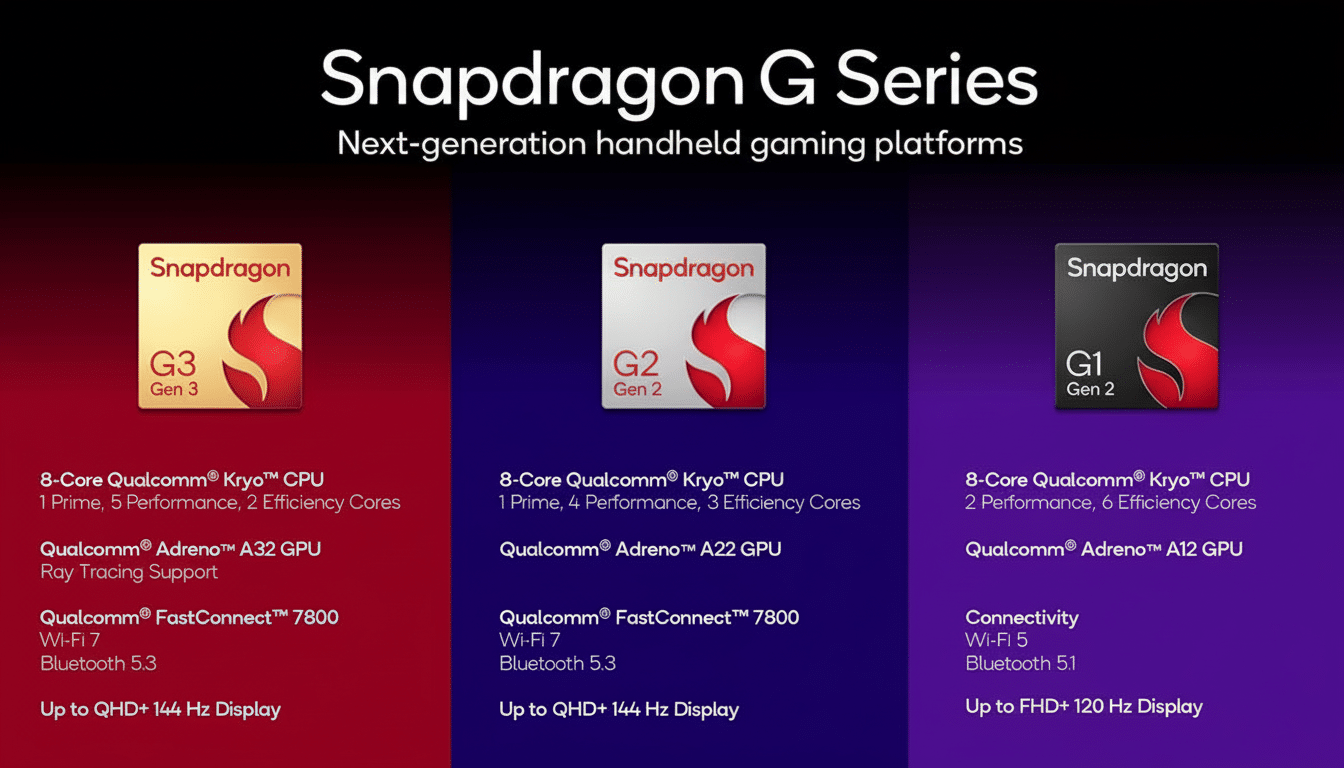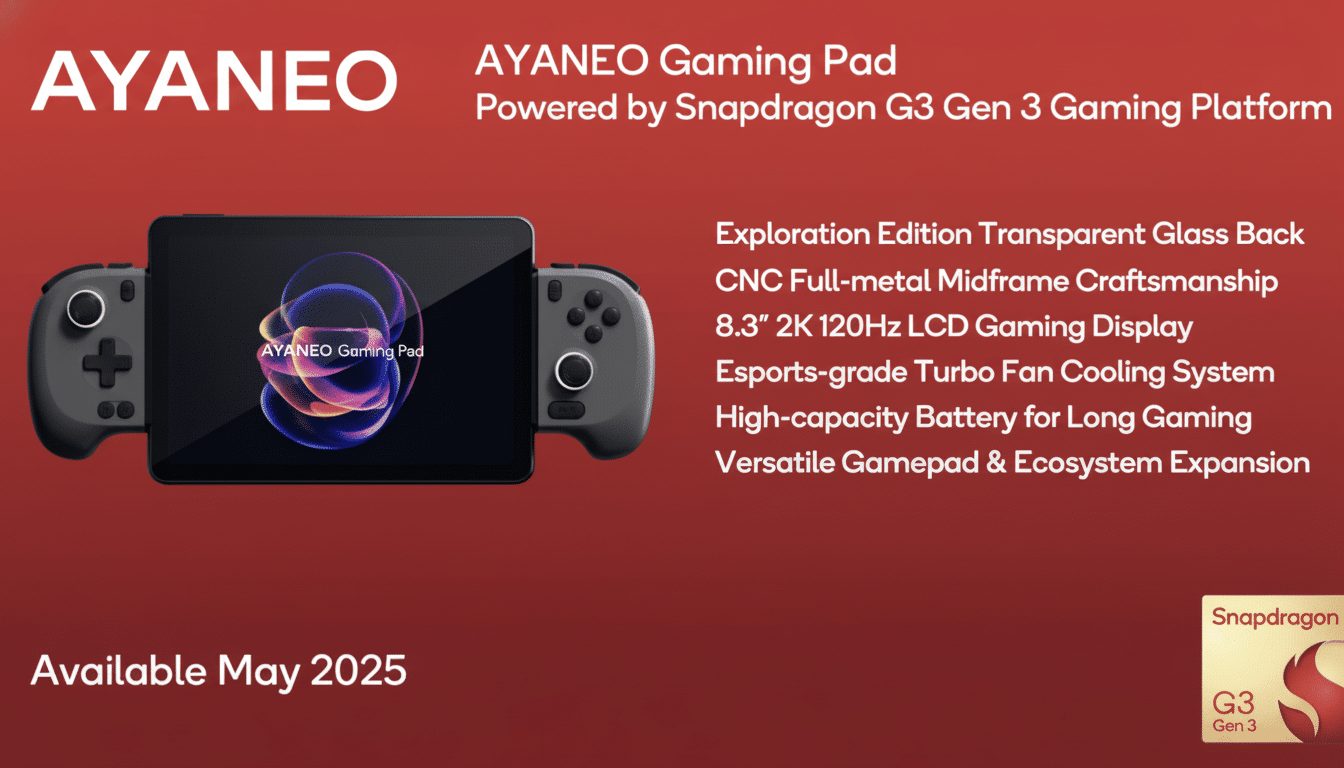The Konkr Pocket FIT arrives with a straightforward claim: flagship-level Android handheld performance without the flagship’s too-high price. It’s using the same Snapdragon G3 Gen 3 silicon found in more expensive rivals and undercutting them so hard that it makes you question exactly how much “premium” should cost at this level.
Design and controls: build quality and input options
When you do pick it up, good luck trying to call the Pocket FIT a budget device. The plastic casing feels solid, the all-glass face is sleek and the build lends an amount of sturdiness that suits long sessions. Face buttons and the cross-style D-pad are clicky and quiet, with a light hollowness of feel that’s easy to get used to.
- Design and controls: build quality and input options
- Display and audio: screen quality and speakers
- Performance and thermals: speed, heat, and noise
- Battery life and charging: endurance and care
- Software and emulation: launchers and streaming
- Price positioning and rivals: value and competitors
- Verdict: strong value with few compromises overall

The most remarkable control trick is out at the triggers: a physical slider alongside each one lets you switch between analog and digital input on the fly. Folks who play racing sims will do well with the linear throw, and platformer/spammer people will love snappy clicks. The shoulder buttons are stacked, and hush-quiet, while the shoulders also have additional hotkeys that you can program to long- or short-press.
There are back buttons, but they’re limited to duplicating basic inputs (A/B/X/Y etc.) and therefore aren’t super useful for mapping advanced emulator hotkeys.
The TMR thumbsticks are capable but low-slung; short throw means larger aftermarket caps are less prone to occasionally hitting the glass bezel, and a little more leverage is nice.
Display and audio: screen quality and speakers
No OLED here — and that will raise some eyebrows. But that 6-inch 1080p LCD at 144Hz holds its own better than I would have guessed. Consistency is great, the motion is like butter and edges are edge-to-edge in a way you really don’t get to see with LCD panels. Blacks aren’t as OLED-deep, but unless you’re gaming in a pitch-dark room, it’s not an appreciable difference.
The peak brightness lags some premium panels, but in trade you get a swift, clean response with none of the light bleed that’s marred other handhelds. Front-facing speakers are perfectly placed to avoid palm blockage and they offer plenty of well-balanced output with enough body to cater for your retro soundtracks and modern indies.
Performance and thermals: speed, heat, and noise
Powered by a Qualcomm Snapdragon G3 Gen 3 and featuring maximum RAM we’ve tested up to 16GB, the Pocket FIT resides at the pointy end of performance for an Android handheld. In our comparisons, CPU multithread scores stack up roughly a quarter higher than Snapdragon 8 Gen 2-based rivals, and the GPU is showing improvements breaking more like 40% in popular mobile benchmarks.
Heat and noise are well managed. In testing, for its price and size, the Pocket FIT ran relatively cool, hitting only around 38°C at the chassis midpoint in GFX tests—cooler than some metal-bodied competitors that touch the low 40s. The fan is audible even on maximum power profiles, but the thermal hotspot is nowhere near the deck, so comfort remains solid.

Real-world gaming tells the story. Older systems with a lot of shaders and 120Hz black frame insertion worked fine with Balanced profiles. We did have trouble with the performance preset for Nintendo Switch emulation, but the compatibility and frame pacing control was impressive. The community-maintained open-source Turnip Vulkan driver remains a bright spot for this hardware.
Battery life and charging: endurance and care
The endurance-optimized 7,400mAh battery is especially substantial. I’d expect 10 or more hours on old consoles with shaders enabled, around six hours on Switch titles, and probably somewhere under eight hours for PS2 at 2.5x with a gaming profile. Plug in some Windows emulation and the game looks very different indeed: power draw snaps up to about 13W on max power, so I reckon that you’re looking at nearer three hours.
It charges quickly — from 5% to full in about 80 minutes when we tested. There are even some nice battery care features: bypass charging when you’re at your PC and a toggle to cap the maximum charge, both available through the quick menu system. There’s a 3.5mm jack at the bottom, which is useful when that fan starts to get loud.
Software and emulation: launchers and streaming
Android is then blended with a launcher and quick controls that don’t seem like the latest experiment. Emulator configuration is simple and you have more performance to give while tweaking than playing. The situation is better than expected for PC game streaming and Windows emulation: GameHub-based examples such as Hollow Knight Silksong breezed past 100 frames per second at 1080p with little to no friction, reminding how far the category has come.
Price positioning and rivals: value and competitors
The straight-to-the-point approach by Konkr’s makers is to deliver the same G3 Gen 3 caliber in top-drawer handhelds, and dust it with a price that kicks off around the mid-$200 mark for early birds with an MSRP of just $299. After the introductory phases, configuration prices increase by about $60, but even then the value calculus remains persuasive.
Alternative-considering shoppers will look at an Elite model of the Pocket FIT with Snapdragon 8 Elite and additional RAM for those seeking better Windows emulation support. The AYN Odin 3, which also features the flagship-level chip but a larger 6-inch 120Hz OLED panel, is available elsewhere at a higher price. And the ANBERNIC RG477M has a unique selling point in its 4.7-inch 120Hz 4:3 screen that makes classic libraries look good, though the Dimensity 8300 platform is behind on driver parity. Switch and Windows, of course, yield more pathways. The Odin 2 Portal is still a refined option with Snapdragon 8 Gen 2 and an attractive 7-inch OLED, but it’s no longer the value leader.
Verdict: strong value with few compromises overall
The Pocket FIT nails the basics — fast silicon, an honest-to-God quick 144Hz display, good thermals and a comfortable form factor — at pricing cheaper than most in its class. It ditches OLED and suffers from smallish sticks, but those sacrifices don’t really dull what counts most — performance and playability.
If Windows emulation is your guiding star, an Elite-grade chip it shall be. For everyone else, the G3 Gen 3 is your sweet spot and new standard for affordable flagship Android handhelds. This is the kind of rare “value” product that feels like no compromise.

